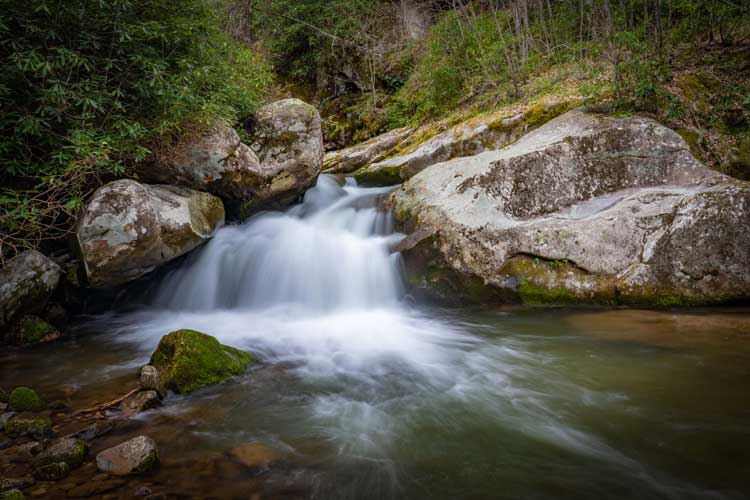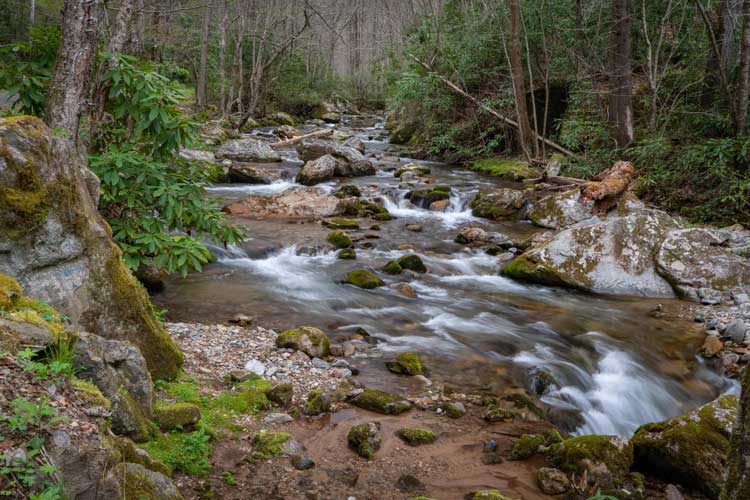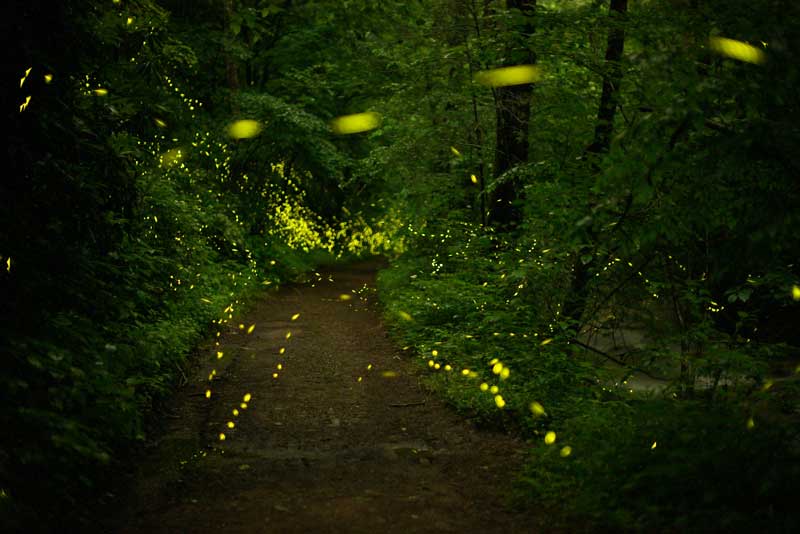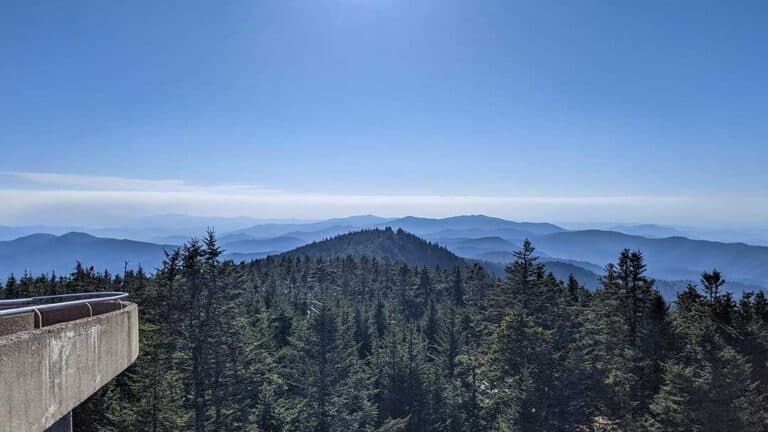
The 10,000-acre Rocky Fork watershed in Northeast Tennessee is Appalachia at its very best. Surrounded by wilderness, national forest, and the Appalachian Trail—and with the cleanest water, the rarest species, the most secluded hiking and biking trails in the region—Rocky Fork is a mecca for trail users, anglers and wildlife watchers with almost limitless options.
Last November, the Tennessee Department of Environment and Conservation (TDEC) announced a controversial development plan for the newly named 2,000-acre Lamar Alexander Rocky Fork State Park. It includes a large visitor center encroaching on a fragile wetland and a two-lane road cutting up a steep mountain through the heart of the park to an overlook and campground.
“Opponents of the current development plan are not opposed to limited development of the park,” said Johnny Cosgrove of Tennessee Citizens for Wilderness Planning. “They are simply opposed to the wrong kinds of development in the wrong places.”
Slated to cost taxpayers $23 million, the massive road—only three quarters of a mile long—would be 24 feet wide and 17 percent grade on very steep slopes, requiring road cuts up to 75 feet tall, retaining walls up to 27 feet high and wire bolted into rock in hopes of holding slopes back. Architects, engineers and water quality specialists find the plan rife with environmental impacts that would destroy what makes the park a unique draw for tourism.
“It would sacrifice that entire section of the watershed to vehicular access,” says Rocky Fork trail crew leader John Beaudet. “All other users would avoid that area in favor of parts of the park that are left intact.”
Before the park’s acquisition in the mid-2000s, the Rocky Fork tract was envisioned as remaining primitive and minimally developed. Tennessee Wildlife Resources Agency hoped to acquire it and create a Wildlife Management Area with some tiny cabins and a primitive campground stating, “due to the rugged terrain, RVs and pop-up trailers would not be allowed.” A Unicoi County workshop on sustainable tourism led by The Conservation Fund warned: “Resource preservation must take precedence over resource use, regardless of how the user might enhance the tourism experience.”
Now advocating for Rocky Fork and its many wildlife species, several conservation organizations and concerned groups recently sent a letter to the new head of TDEC David Salyers. Defenders of Wildlife, Tennessee Citizens for Wilderness Planning, The Sierra Club, The Wilderness Society, and others asked that a sound management plan be developed and alternatives evaluated before commencing construction. Salyers and recently appointed Deputy Commissioner Jim Bryson say they are taking some time to look into the issue.
“Rocky Fork is part of the largest undeveloped tract of land remaining in the Southern Appalachians, it was purchased to preserve it, and has rare species and treasured wildlife that deserve our respect,” says Ben Prater, Southeast program director of Defenders of Wildlife. “We believe the state of Tennessee has an obligation to take care of its 2,000-acre park so that what they do is not detrimental to the rest of the tract.”

Sustainable Alternatives
The currently proposed site for the visitor center is, as Cosgrove puts it, “smack-dab in the middle of the habitat of the star-nosed mole and the breeding grounds for the rare synchronous and blue ghost fireflies, whose amazing spring light show attracts thousands of visitors to the park every year.”
Newly acquired by the state is an 88-acre property adjacent to the park, which would provide an excellent alternative site for building a visitor center and campground, protecting the moles and fireflies and giving campers much easier access than the proposed site up on Flint Mountain.
Those in favor of the Flint Mountain road project point to its handicapped-accessible overlook to justify the destruction. But part of the park plan already in motion is a sustainable ADA-compliant trail on an already existing logging road of approximately one mile through the heart of the park along Rocky Fork Creek. Visitors needing wheelchair access would be able to traverse this trail through the park’s most spectacular scenery, obviating the need for the expensive road and its destruction of the park’s biodiversity.
Biologist Dr. Foster Levy, retired from East Tennessee State University, conducted numerous plant surveys cataloging Rocky Fork’s fragile flora. With rare plants in mind, Levy presented a plan in 2014 to use electric vehicles to transport visitors to a primitive campground and the park’s historic Chickamauga Wars massacre site. Similar to shuttle systems used successfully in Yosemite and Zion national parks, the multi-person electric vehicles could be run as a privately operated concession whose cost would dwarf that of the proposed 24-foot wide road.
“This plan would minimize environmental impacts while providing access to members of the public unable or disinclined to walk,” says Levy. “As a newly formed primitive park, Rocky Fork could lead the way for Tennessee State Parks and demonstrate low-impact, long-term sustainable use of park resources, while saving state funds and spurring local economic development.”
Christian Hunt, Southeast Program Associate with Defenders of Wildlife, says now is the time for transparent dialogue with TDEC. “The recent acquisition of 88 acres—with room for a campground and visitor center—means we could develop amenities without having to bulldoze the heart of the park.”
Frances Figart is the creative director for the Great Smoky Mountains Association. The views expressed here are her own and do not reflect those of GSMA or Great Smoky Mountains National Park.
Ecotourism for Rocky Fork
Ecotourists are intrepid, conscientious travelers willing to pay up to three times more for a rustic, biodiverse experience. Ecotourism considers the triple bottom line, making sure a project creates social/cultural, economic and conservation benefits. Here are some ways the Tennessee Department of Environment and Conservation could apply sustainable development thinking in its new park:
- Involve the public in the park planning process
- Limit development to parking, bathrooms, trails and primitive camping using eco-conscious structures and infrastructure so fragile salamanders, bats, falcons, and other species can thrive
- Build the visitor center on the periphery of the park so the wetland and field just inside the park gate can remain home to the star-nosed mole and the breeding and hatching ground of charismatic fireflies
- Design the visitor center and other park structures to emulate the historic buildings of Appalachian heritage using local, native materials
- Encourage locals to create economic benefits for themselves by providing accommodations and concessions outside the park
Stay in the loop about the development issue and learn more at RockyForkJournal.com and the Rocky Fork Watershed Almanac on Facebook.








